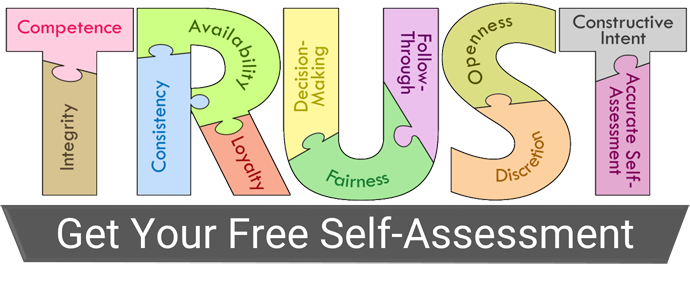2 Examples: Disharmony and Harmony in the Workplace
When it comes to harmony in the workplace, it's a lot like ballroom dancing.
There's not a lot of margin for error in ballroom dancing. The slightest breakdown in communication ruins the dance. A missed connection is an obvious error. Being out of step with your partner diminishes the beauty of the number. Team members on highly effective teams are equally attuned to each other. 
Each member knows when to step in and lead, when to step back and follow and when to yield the floor to others.
In a recent assignment, I was asked to diagnose why one team was struggling so mightily while another was hitting all their targets and operating like a well-oiled machine. Both teams were equally resourced, comprised of a similar mix of members, and had the same objectives. Outwardly, it defied logic that one team was out-performing the other so dramatically.
Observation Alone Won't Reveal the True Dynamics of Harmony in the Workplace
The reason no one inside the organization could pinpoint the problem is that both teams appeared to be doing all the same things.
Team members attended meetings. They debated and decided on next steps. They created action plans and implemented. They worked on their shared goals.
Some of the observations were confusing:
- Why did the high performing team argue more often and more passionately than the low performing team?
- Why didn't the high performing team socialize with each other as often as the low performing team?
- Why did the high performing team seem to spend less time in meetings and in the office?
To a casual observer, it appeared that the low performing team got along better and worked harder.
Self-reporting alone usually doesn't identify the contrasts in harmony in the worksplace.
To accurately assess yourself is not easy. Even more challenging is accurately assessing your entire team. People tend to make fundamental attribution errors when it comes to self or group assessment.
The most common error is the us/them thinking. Finger-pointing. One group believes they do a better job than the other... And the other group feels exactly the same way. Both can't possibly be right. But their perceptions cloud their ability to be objective in their assessment of themselves and others.
In this organization, the low-performing team's self-assessment failed to identify any areas for improvement. They were utterly unable to see what was getting in their way. Likewise, the high-performing team was unable to identify what was making them more effective. They were all too close to see it.
There is no perfect playbook for harmony in the workplace.
While there are good tools and best practices for teams to follow, there is no blueprint that will work for every team.
That's because every team is unique. The shared goal, along with each individual goal, plus the combination of every team member's skills and experiences add up to all teams being one of a kind.
When team members or leaders try to force fit team members into situations or roles that worked for some other team, it seldom works. Doing so can cause people to feel marginalized. It curbs the team's effectiveness because it boxes team members in.
The best teams work well together because each individual brings all of himself or herself to the team.
Despite this organization's best efforts, trying to get the low-performing team to behave more like the high-performing team backfired. The results declined, and the resentment grew.
You have to break harmony in the workplace into its components
Observation didn't work. Self-assessment didn't work. Asking one team to behave as the other team backfired. That's why this organization asked for help.
When the teams were evaluated objectively and narrowly, we were able to see that:
Debating wasn't a bad thing. The low-performing team had less discussion because people held back. They were conflict averse. However, by not engaging in debate and not getting all voices in the mix, there was a profound lack of buy-in. Team members went along but were not personally invested in team decisions. On the high performing team, every member felt committed because every team member felt heard.
Group harmony shouldn't be measured by social connections. In fact, when there are factions in a team, the social ostracizing of some team members impairs the overall effectiveness of a team. In this case, it was better to have mutual respect than social ties.
Working longer isn't the same as working better as a team. The high-performing team was highly efficient. They got things done quickly and did, in fact, work fewer hours. But the quality of their work was evident throughout the day. They didn't spend time complaining about things they couldn't or wouldn't fix. They didn't spend time lobbying individuals outside of team meetings, choosing instead to get full participation in inclusive and transparent dialogue.
One of the core components of harmony in the workplace is trust. To learn more about building trust with your team, check out "Trust is a Two-Way Street", found only on the People First Leadership Academy.
